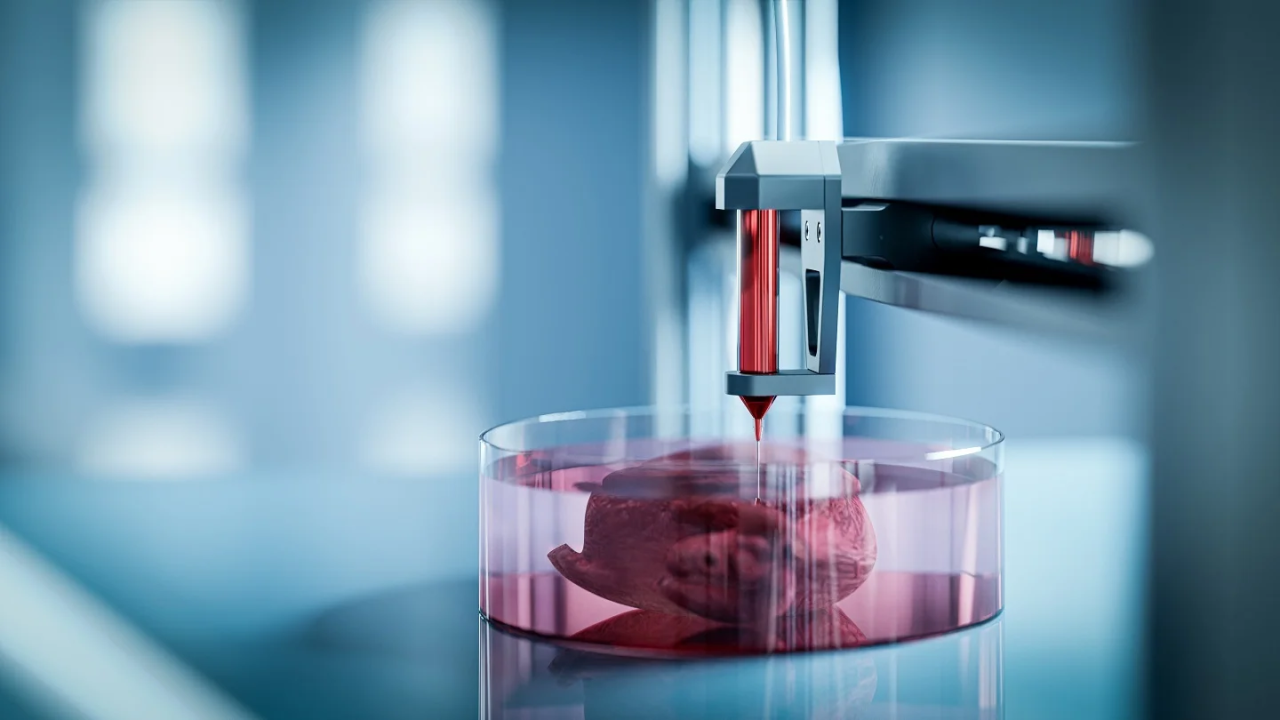Imagine a future where, instead of waiting on a long transplant list, you could simply print a new organ when needed. Sounds far-fetched, doesn’t it? Well, with the rapidly advancing field of biofabrication, we’re inching closer to making this a reality. Scientists are now using 3D printing technology to create human tissues—and even organs! This revolutionary field holds the promise of transforming organ transplants and regenerative medicine forever. But how exactly does biofabrication work, and what could it mean for the future of healthcare? Let’s explore this mind-blowing technology together!


What is Biofabrication?
At its core, biofabrication refers to the process of creating biological structures, like tissues and organs, using cutting-edge technologies such as 3D printing. While 3D printing itself isn’t new (it’s been used in industries ranging from manufacturing to art), using it to print living cells and human tissues is a whole different ball game.
In biofabrication, special bioinks—which are composed of living cells and biomaterials—are loaded into a 3D printer. The printer then meticulously layers these bioinks, one thin sheet at a time, to build up complex tissue structures. This process mimics how tissues naturally develop in the body, allowing scientists to create tissues that are structurally and functionally similar to their real counterparts. Think of it as using living cells as building blocks, stacking them together like LEGO bricks, but with way more precision and care.
How Are Scientists Printing Organs and Tissues?
While printing a fully functional human heart may sound like a scene from a futuristic movie, we’re already seeing significant progress in printing simpler tissues like skin, cartilage, and even parts of the liver. The key challenge, of course, lies in the complexity. Organs like the heart or kidneys aren’t just clumps of cells; they have intricate networks of blood vessels, nerves, and tissues that all need to work together seamlessly.
But scientists are making huge strides. One approach involves creating a 3D-printed scaffold—essentially a framework on which human cells can grow and organize themselves into a functioning tissue. This scaffold provides the right environment for cells to thrive, giving researchers a controlled platform for tissue development. In some cases, scientists are even integrating blood vessels into these structures, a critical step in moving toward printing entire organs.
Right now, researchers are focusing on printing smaller and simpler tissues that can be used to patch damaged areas. Imagine being able to replace damaged cartilage in a knee or printing a skin graft for burn victims—all customized and printed in the lab!


What Could This Mean for Organ Transplants?
Here’s where things get even more exciting. Right now, thousands of patients are on organ transplant waiting lists, and many never receive the organs they desperately need. Even for those who do receive a transplant, there’s always the risk that their body will reject the new organ, requiring a lifetime of medication to suppress their immune system.
Now, imagine a world where we could print a new heart, kidney, or liver—custom-made for the patient using their own cells. This would dramatically reduce the risk of rejection and eliminate the need for long waits on donor lists. In fact, biofabrication could completely transform organ transplants, making them more accessible, faster, and personalized.
And it doesn’t stop there. Biofabrication could be a game-changer for drug testing and medical research. Instead of testing drugs on animals or using less effective methods, researchers could test treatments on 3D-printed tissues that closely resemble the human body. This would lead to more accurate results, speed up drug development, and reduce the need for animal testing.
The Road Ahead: Challenges and Ethical Considerations
Of course, as with any groundbreaking technology, biofabrication comes with its own set of challenges. One of the biggest hurdles is complexity. Printing tissues that are simple, like skin, is one thing, but printing fully functional organs with intricate structures and blood flow is still a work in progress. It may take years before we see biofabricated organs ready for clinical use, but the progress so far is nothing short of remarkable.
Then, there are ethical considerations. If we get to a point where we can print entire organs, who will have access to this technology? Will it be available to everyone, or just those who can afford it? These are important questions we’ll need to address as biofabrication continues to advance.


Biofabrication: The Future of the Medicine
Biofabrication is more than just a technological breakthrough—it’s the future of medicine. From 3D printing skin grafts for burn victims to the tantalizing possibility of printing entire organs, this field is poised to transform how we treat diseases, heal injuries, and save lives. While there are still challenges to overcome, one thing is clear: the day when we can 3D print a heart may not be as far off as you think.The promise of biofabrication is immense, and it’s not just about replacing lost or damaged organs. It’s about rethinking how we approach medicine entirely, offering a new way to repair the human body, one printed layer at a time.




My name is Ali Emre Cabadak, a dedicated biology enthusiast currently pursuing my studies at Marmara University, where I am majoring in Bioengineering. As a passionate advocate for scientific discovery and innovation, I am the founder of Biologyto. My goal is to bring the wonders of biology closer to everyone and inspire a new generation of thinkers and innovators. Through Biologyto, I aim to write scientific articles that delve into the fascinating world of biology, sharing insights and discoveries that inspire curiosity and innovation.





